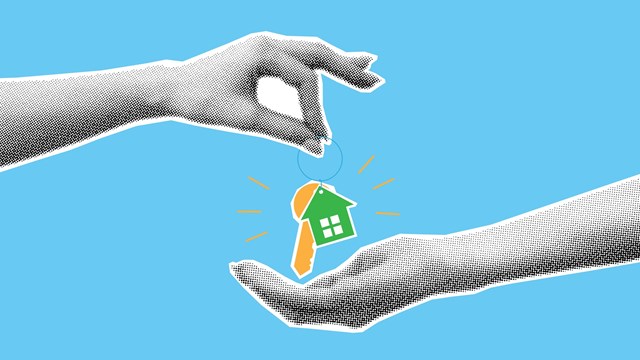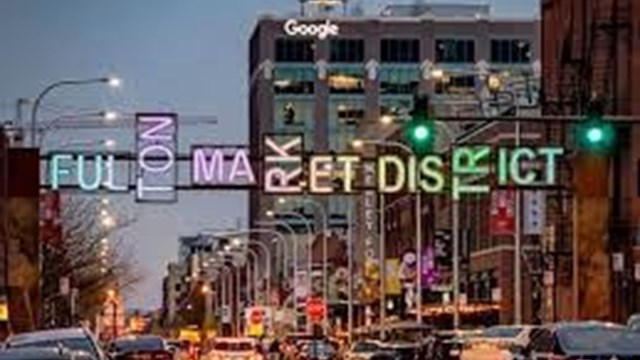In the wake of the pandemic and in anticipation of the recovery to come, do New York City co-ops and condominiums need to consider setting themselves apart to compete in the market? The answer is yes - but the bigger question is, how?
What is Branding?
In marketing speak, branding is the practice of creating a name, symbol or design that identifies and differentiates a product from other competing products. It is the art of aligning what you want people to think about your product, with what they actually do think about your product. It’s the difference between Coke and Pepsi, or Ford and Chevrolet. It’s the force that influences potential customers to choose one of the other. It potentially can be what influences a potential buyer to buy your apartment, or in your building.
“Branding includes the verbal message or copy that speaks to you as a person, as a buyer, as an owner,” says Marilyn Sygrove, principal of Sygrove Design Associates in Manhattan. “Words are as essential as the visual cues here. The visual message, for instance, is what takes one deeper into a website to see what else there is to know about this building, what it offers, its proximity to important factors like transportation, shopping, nearby parks, the neighborhood.”
Working in Tandem
Branding is not just a matter of an updated website. It also involves keeping your building competitive with new buildings coming into the market, and making your online presence, essentially your website, easily findable on search engines.
Existing buildings are competing with newly-built buildings for every transaction in today’s market. An important factor in being competitive is to upgrade existing buildings to new technologies offered as standard in new buildings, explains Sygrove. She recommends these upgrades include energy efficient lighting, new desk equipment that enables staff to communicate with owners easily, replacing old bulky intercom panels with a new, phone-based, dial up system. Installation of tasteful bad weather mats with logos, and super easy to maintain finishes such as porcelain and upholstery fabrics that look and feel residential but having remarkable cleaning capabilities as well as advanced products that offer unlimited design capabilities for carpets and wall coverings raise your building common areas to the next level.
Equal attention must be paid to your building or development’s online presence and profile. “Developers of new condo and co-op buildings have spent a ton of money to do research about what sells and brings buyers to the table,” says Sygrove. “They are using the exact same features that you have, but they work hard at getting the word out there to prospective buyers and existing members of the surrounding community. Existing buildings are not doing this. It is baffling to designers that more effort is not made to announce to the world that you’ve had a facelift.”
“Our clients spend large sums of money to improve their brand only to be scouted by the real estate community as search engines can’t find a building’s website. That’s a result of little or no search engine optimization (SEO). Often, posted photos on these sites are of inferior quality. One must consider the experience of living in the building. What is the history of the building and the neighborhood? What is it like to walk past the new facade or walk through the lobby? Is it welcoming? Is it hip? It is understated. The tour should then move on to the elevator, the hallways to your home, the amenity spaces, rooftop garden, lounge areas, gym. These are the components of a good branding campaign.”
The View From Sales & Marketing
Gail Spreen, a senior VP with Streeterville Properties Group in Chicago observes that “With all the new construction and development happening in Chicago in the last several decades, it becomes necessary for developers to intentionally consider branding from the very first stages, well before they ever even break ground. With iconic places abounding and rich history seeped into even some of the most unassuming facades, branding of buildings is an essential part of planning and development. For some - like the Tribune Tower and the John Hancock Building, for example - their celebrity, history and recognizable name lend easily to creating a desirable luxury lifestyle with an extra claim to fame. In our newer places, like One Bennett or Riverview, the location, the amenities, and the finishes selected all combine to provide a deliberate and distinct vibe that becomes part of the building’s brand.
“In the city of neighborhoods, many of our high-rise residential buildings attempt to create their own mini neighborhoods and cultivate a lifestyle and ambience that elevates art, culture and luxury,” Spreen continues. “The neighborhood of Streeterville – with its colorful namesake Captain George Wellington Streeter – is proof of this trend, and proof that each of these additions have helped to elevate the entire neighborhood from the industrial, parking or empty lot filled space into one of the most desirable residential zip codes in Chicago.”
In today’s competitive market, and to benefit from the coming recovery seek design for your space that improves the quality of life for the residents and also increases the value of the property. Branding can include naming the building, having a color theme, a logo, selecting a typeface all which subliminally sends out a message. Work with the photographer to capture photos of all of the spaces as well as vignette shots that show detail and quality. Skillfully orchestrate these components into a website that makes your building appealing, crisp, and unique. Make buyers want to be a part of it.







Leave a Comment